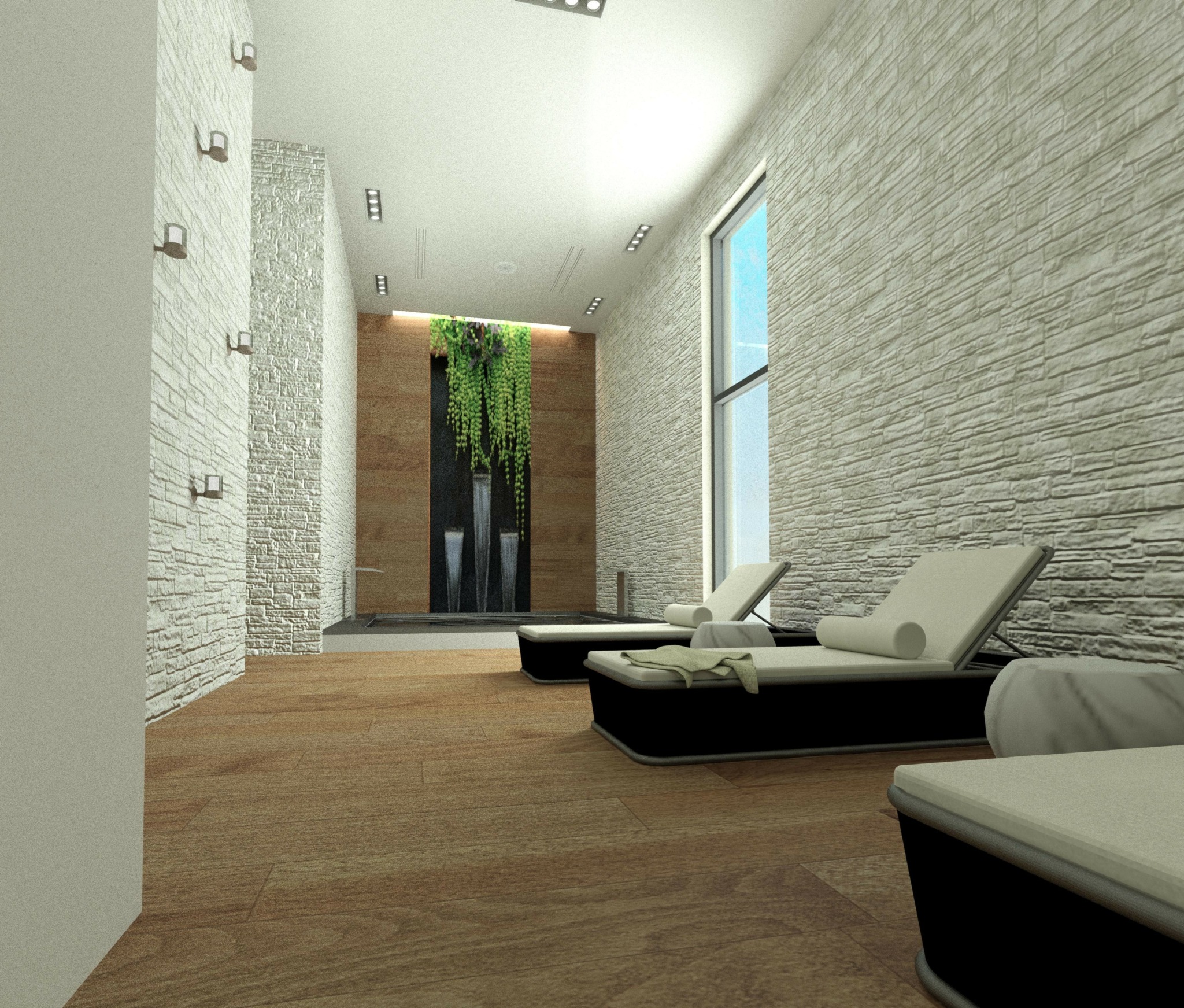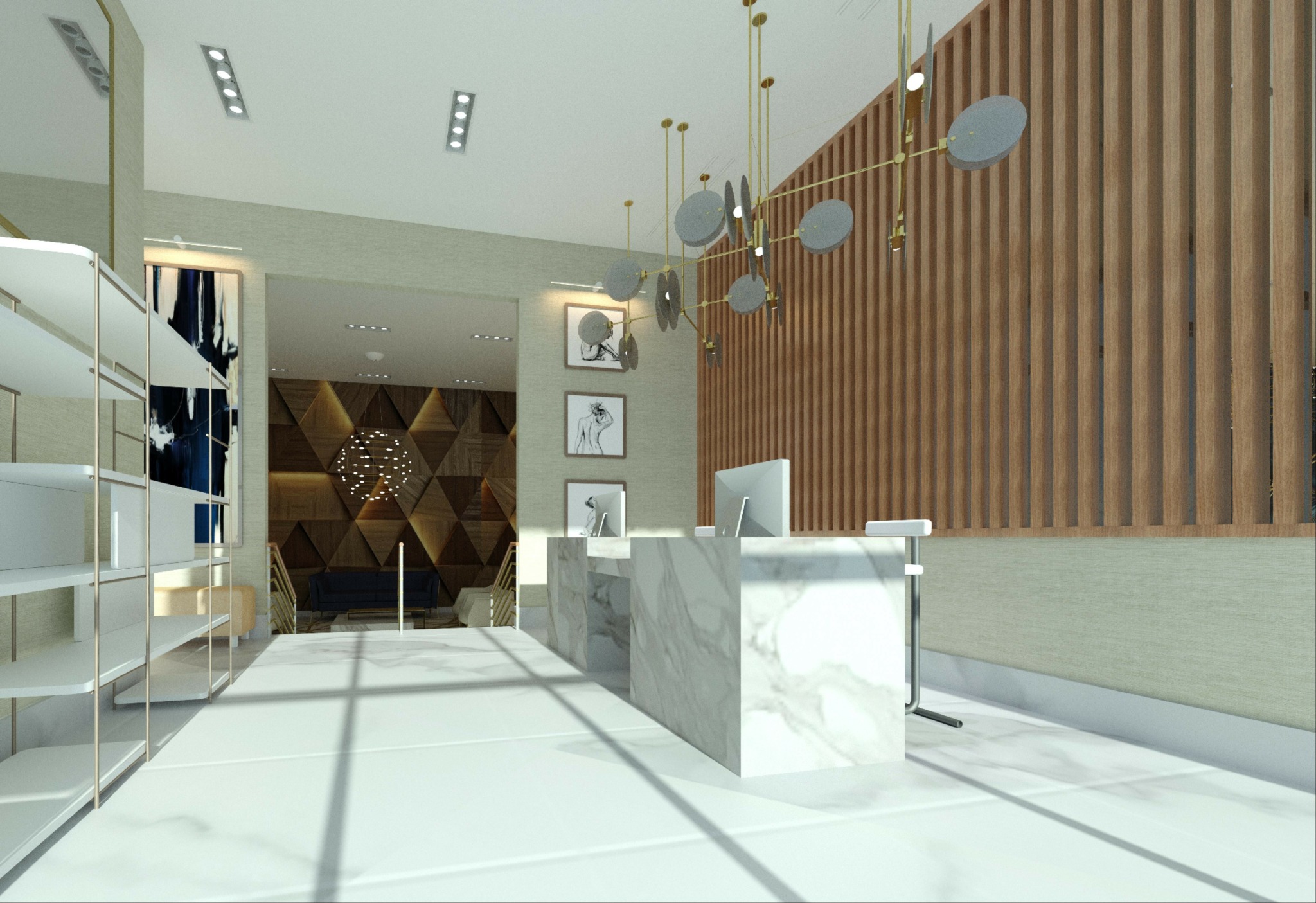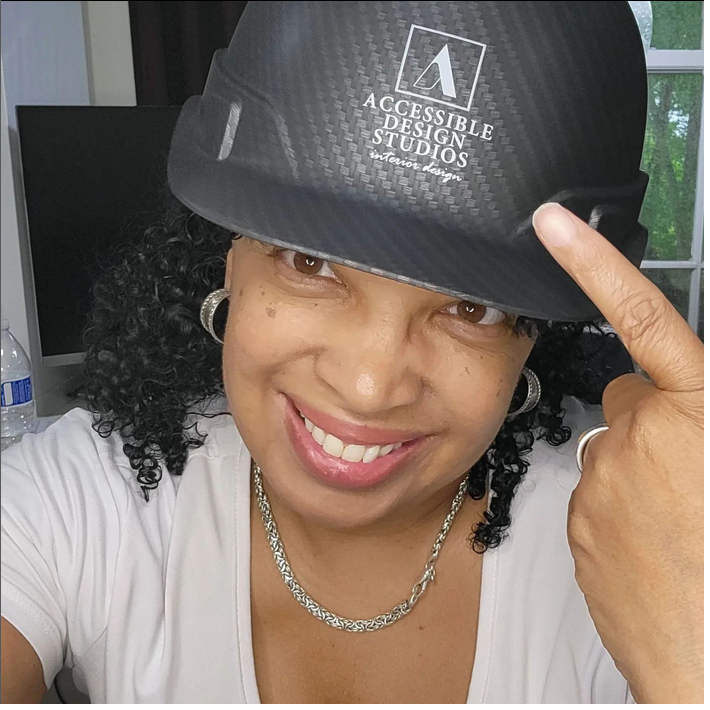We’re excited to introduce you to the always interesting and insightful Joscelin Mackey. We hope you’ll enjoy our conversation with Joscelin below.
Joscelin, appreciate you joining us today. Looking back at the decisions you made early in your career, particularly whether to join a firm or start your own, do you feel you made the right choice for that stage of your career?
When I was first starting out, did I join a firm or start my own? After earning my bachelor’s degree in interior design, I began my career by joining a few well-respected architecture firms—specifically in their interior design departments. At that stage, starting my own firm wasn’t even on my radar. I wanted to build a solid foundation of technical knowledge and gain real-world experience before considering anything entrepreneurial. Working in those firm environments was essential for sharpening my skills in interior architecture, construction documentation, code compliance, and the overall design process from concept through construction.
Why did I make that choice?
The decision to work for established firms was both practical and strategic. First, I needed mentorship and exposure to the full scope of commercial interior design, which was far more complex than I initially understood when entering the field. Like many people, I entered design school thinking “interior design” meant picking finishes, colors, and furniture—more like decorating. But through my education and studio work, I discovered that commercial interior design is deeply rooted in public safety, health, and welfare. It’s 90% interior architecture based on building codes and standards, about 5% aesthetic creativity, and the rest is project management. That realization changed everything for me.
I knew that if I was going to be effective in this field—especially in complex spaces like government buildings, offices, or industrial settings—I needed to learn how to draw technical construction documents, navigate permitting processes, and collaborate with architects, engineers, and contractors. The firms I joined provided those opportunities and gave me the space to grow into the technical side of design.
Looking back, do I think it was the right choice?
Absolutely. That experience was invaluable. It prepared me to take and pass the NCIDQ exam—a rigorous, three-part, 11-hour exam required to become a certified interior designer. Earning that certification allowed me to register as a licensed interior designer in the state of Georgia, which was a turning point in my career. That license meant I could legally stamp my own construction drawings and submit them for permitting—especially for tenant buildouts and renovations—without needing to practice under an architect.
What were those early years like?
The early years were filled with learning curves and “aha” moments. It was exciting, challenging, and occasionally overwhelming. There were times I felt the weight of proving myself in an industry that still doesn’t always understand the role of a Registered Interior Designer. One of the most difficult parts of my journey has been explaining the difference between a licensed interior designer like myself—trained in life-safety, code compliance, and construction documentation—and a decorator or unlicensed designer. It’s a misunderstanding that persists both within and outside the industry.
Eventually, when I became licensed and had the confidence and credentials to work independently, I launched my own practice. It was a natural next step. I wanted to be the one responsible for my own projects, to advocate for the profession, and to expand awareness of what commercial interior designers actually do.
Great, appreciate you sharing that with us. Before we ask you to share more of your insights, can you take a moment to introduce yourself and how you got to where you are today to our readers.
My name is Joscelin Mackey, and I’m a Registered Interior Designer based in Georgia, specializing in commercial interior architecture. I’m one of only about 400 professionals licensed in this field in the state—and among a very small number of Black women who hold this designation. My work is rooted in the belief that design is more than just beauty—it’s about health, safety, and functionality in the built environment.
How I Got Into the Industry
My journey began with a deep love for creative problem solving and spatial design, which led me to earn a bachelor’s degree in interior design. That academic foundation opened my eyes to the full depth of what interior designers really do—far beyond the surface-level aesthetics many people associate with the profession. I was drawn to the technical side of design, particularly the ways in which our environments affect how we feel, focus, heal, and function.
The Work I Do & What I Bring to the Table
Today, I lead my own practice, where I provide interior architectural services for commercial clients, including businesses, institutions, and government agencies. My work spans tenant buildouts, adaptive reuse, and renovations, and I handle everything from code compliance and construction documents to spatial planning and project management.
But my design philosophy extends even deeper than that. I’m deeply passionate about the science of how interior spaces affect our nervous system, our cognition, and our emotional well-being. That passion led me to author the book Designing for the Senses: A Neuroscientific Exploration of Interiors—a project that bridges the gap between neuroscience and interior design. In it, I explore how thoughtful environments can support our physiology, reduce stress, and elevate the human experience.
The book is available on Amazon and other major online retailers, and it reflects my core belief: interior design isn’t just about how a space looks—it’s about how it feels, how it works, and how it supports the people inside it.
What Sets My Practice Apart
I bring a unique blend of technical expertise, licensed authority, and research-backed empathy to every project. As a registered designer, I can independently stamp and submit construction drawings for permitting, which allows me to lead projects from start to finish. But beyond credentials, what sets me apart is how I integrate neuroscience, sensory design, and inclusive thinking into commercial spaces.
How about pivoting – can you share the story of a time you’ve had to pivot?
Pivoting has been a central theme in my journey—not just once, but several times. One of the earliest shifts happened before I even began my career. I initially set out to study psychology in college, driven by a curiosity about how people think, behave, and experience the world. I’ve always been fascinated by the human mind. But even then, I carried something else with me: a quiet love for the built environment.
As a child, I would spend hours studying my grandfather’s hand-drawn construction plans—turning them into puzzles, redrawing walls, reorganizing spaces. I didn’t fully understand what I was doing at the time, but I was instinctively exploring space planning and design thinking before I had the language for it. Looking back, I realize those moments were early clues pointing me toward my true calling.
The second major pivot came during the Great Recession, when I was working in the mortgage finance industry. Like so many others, I found myself watching an entire sector collapse. It was a time of uncertainty, but also opportunity. With the industry falling apart around me, I was forced to reflect on what I really wanted—and needed—a career that was not only stable, but meaningful.
That’s when I returned to the spark that had always been there: design. I went back to school and earned a bachelor’s degree in interior design, diving into a field where I could merge both sides of myself—my analytical, human-centered mind and my creative, spatial intuition. It was a powerful realization: that I didn’t have to choose between psychology and design. In fact, interior design allowed me to do both.
Today, my background in psychology deeply informs the way I approach space. I’m not just designing for visual appeal—I’m designing for how people feel, focus, heal, and interact within a space.
Have any books or other resources had a big impact on you?
One of the most impactful voices in shaping how I think about business, leadership, and mindset has been Napoleon Hill. His teachings—not just in Think and Grow Rich, but across his body of work—emphasize the power of focused intention, clarity of purpose, and belief in one’s vision, which strongly align with how I’ve built my career and practice.
What stands out to me isn’t just the pursuit of financial success, but the deeper idea that your thoughts, habits, and environment shape your outcomes. Hill’s focus on developing a strong mental attitude, cultivating persistence, and surrounding yourself with like-minded individuals has been instrumental for me—especially in an industry where I’ve often had to explain and advocate for what I do as a licensed commercial interior designer.
His work reminds me that internal alignment drives external achievement. That mindset helped me navigate career pivots, lead projects with confidence, and ultimately start a practice that reflects both my technical skills and my personal values.
Contact Info:
- Website: https://www.accessibledesignstudios.com
- Instagram: https://www.instagram.com/accessibledesignstudios
- Facebook: https://www.facebook.com/accessibledesignstudios/
- Linkedin: https://www.linkedin.com/in/joscelin-mackey-ncidq-rid-accessibledesignstudios/
- Youtube: https://www.youtube.com/@accessibledesignstudios8282


Image Credits
Joscelin Mackey


